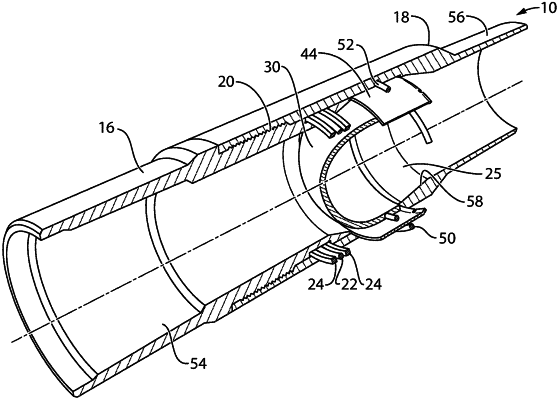| CPC E21B 7/20 (2013.01) [E21B 17/08 (2013.01); E21B 17/14 (2013.01); E21B 21/10 (2013.01); E21B 33/14 (2013.01); E21B 33/146 (2013.01); E21B 34/063 (2013.01)] | 43 Claims |

|
1. An apparatus for forming a buoyant chamber in a well, the apparatus comprising:
(a) a first tubular member operable to be positioned in the well and having an uphole end and a downhole end, the downhole end operable for fluid communication with a second tubular member that comprises an apparatus operable for forming a lower boundary of the buoyant chamber; the first tubular member having an internal surface, said internal surface defining a fluid passageway;
(b) a rupture disc assembly disposed within the first tubular member operable for forming an upper boundary of the buoyant chamber during deployment of the buoyant chamber into the well, the rupture disc assembly comprising a rupture disc held in a sealing engagement position within the first tubular member by a securing mechanism;
(c) an impact surface structure disposed within the first tubular member;
said rupture disc assembly operable to form and maintain a seal within said first tubular member when said rupture disc is in said sealing engagement position and when an upper surface of the rupture disc is subjected to a hydraulic pressure of a magnitude that is less than a threshold hydraulic pressure;
wherein the securing mechanism is operable to release in response to the upper surface of the rupture disc being subjected to a hydraulic pressure of a magnitude that is at least as large as the threshold hydraulic pressure;
wherein an internal surface of the first tubular member has a larger internal diameter than an internal diameter of an internal surface of the second tubular member;
wherein in operation, in response to the upper surface of the rupture disc being subjected to a hydraulic pressure of a magnitude that is at least as large as the threshold hydraulic pressure, the securing mechanism releases causing the rupture disc to move and be engaged with the impact surface structure, and to break within the first tubular member.
|